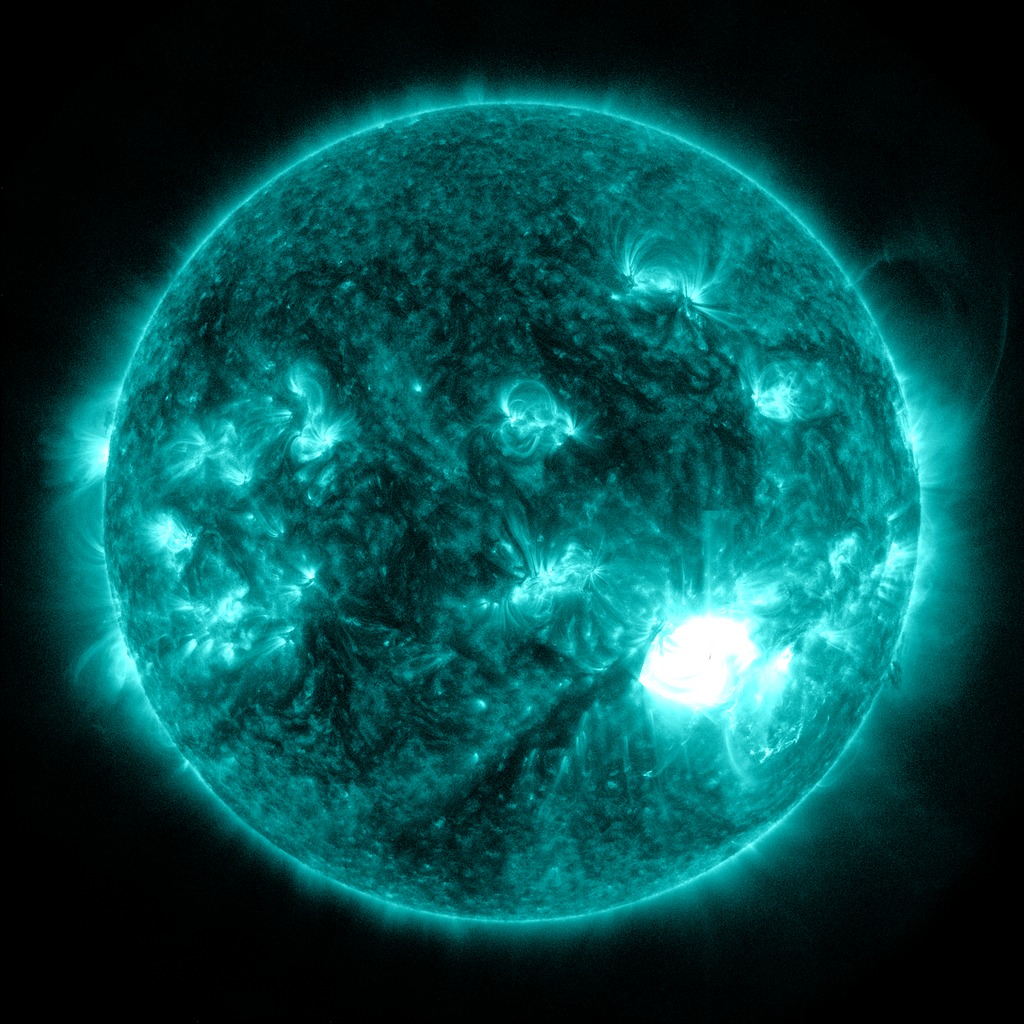Holiday Lights on the Sun
The sun emitted an X1.8-class solar flare, peaking at 7:24 p.m. EST on Dec. 19, 2014.
Watch this video on the NASAexplorer YouTube channel.
The sun emitted a significant solar flare, peaking at 7:24 p.m. EST on Dec. 19, 2014. NASA’s Solar Dynamics Observatory, which watches the sun constantly, captured an image of the event. Solar flares are powerful bursts of radiation. Harmful radiation from a flare cannot pass through Earth's atmosphere to physically affect humans on the ground, however -- when intense enough -- they can disturb the atmosphere in the layer where GPS and communications signals travel.
To see how this event may affect Earth, please visit NOAA's Space Weather Prediction Center at http://spaceweather.gov, the U.S. government's official source for space weather forecasts, alerts, watches and warnings.
This flare is classified as an X1.8-class flare. X-class denotes the most intense flares, while the number provides more information about its strength. An X2 is twice as intense as an X1, an X3 is three times as intense, etc.

NASA's Solar Dynamics Observatory captured an X-class solar flare erupting on the sun on Dec. 19, 2014. This image blends two wavelengths of extreme ultraviolent light, 171 (gold) and 131 (purple).
Credit: NASA/SDO/Duberstein
4k resolution ProRes video in 171 angstrom light.
Credit: NASA/GSFC/SDO
4k resolution ProRes video in 131 angstrom light.
Credit: NASA/GSFC/SDO
Credits
Please give credit for this item to:
NASA's Goddard Space Flight Center
-
Producer
- Genna Duberstein (USRA)
Missions
This page is related to the following missions:Series
This page can be found in the following series:Tapes
The media on this page originally appeared on the following tapes:-
Holiday Lights on the Sun
(ID: 2014109)
Monday, December 22, 2014 at 5:00AM
Produced by - Will Duquette (NASA)
Release date
This page was originally published on Monday, December 22, 2014.
This page was last updated on Wednesday, May 3, 2023 at 1:50 PM EDT.
